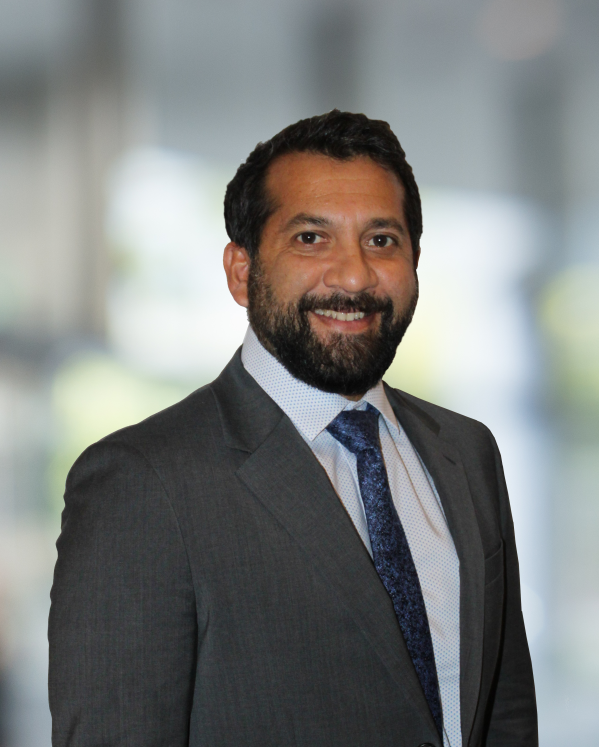
Jaydeep Purandare, PE
Principal Engineer



Contact Information
Phone: (310) 879-4900
Email: jpurandare@rouxinc.com
Location: Long Beach, CA
EXPERTISE
Site Investigation and Remediation
Design and Construction of Soil and Groundwater Treatment Systems
Engineering Design, Permitting. and Construction Oversight
Redevelopment Support
EDUCATION
MBA - University of California, Irvine
MS, Environmental Engineering - University of Cincinnati
BE, Civil Engineering - University of Pune, India
Jaydeep Purandare, PE
Principal Engineer
Mr. Purandare is a registered Professional Engineer with over twenty years in environmental engineering and consulting. He holds a BE in Civil Engineering from the University of Pune, India, an MS in Environmental Engineering from the University of Cincinnati, and an MBA from the University of California, Irvine. Mr. Purandare’s areas of expertise include evaluation of remedial options, design and construction of soil and groundwater remediation systems, Brownfields cleanup plans to support redevelopment, stormwater management studies, wastewater treatment, and landfill design. His projects have involved design of groundwater extraction and treatment systems, soil vapor extraction and treatment systems, landfill design, in situ treatment for groundwater, and vapor mitigation systems. The sites that Mr. Purandare has worked on include landfills, former petroleum tank farms, shopping centers, dormant properties, residences, former industrial facilities, and recreational areas.
- Site Investigations and Remedial Design Implementation Plan – Former Landfill Redevelopment, Carson, CA: Principal Engineer and Engineer-of-Record for the design and implementation of environmental components associated with the development of a 94-acre portion of a former landfill into an indoor/outdoor recreational use facility. Under the oversight of the Department of Toxic Substances Control (DTSC), several on-site investigations and baseline monitoring were conducted in preparation of the engineering design and subsequent grading and construction activities. Roux prepared a Remedial Design and Implementation Plan (RDIP) for submission to the DTSC. The RDIP describes the design and implementation methodology for the environmental components of the planned project, including several landfill cover systems, handling of impacted soils, a landfill gas collection and control system, and building protection systems for planned on-site structures. The RDIP also includes site-specific supporting documents and plans for project implementation, including a Soil Management Plan, Health and Safety Plan, Ambient Air Monitoring Plan, and an Emergency Response Plan.
- Feasibility Study/Removal Action Workplan – Industrial Owner, Irvine, CA: On behalf of a private real estate owner, soil, soil vapor, and groundwater impacts from chlorinated solvent releases caused by a former tenant were identified and evaluated. Under the oversight of the Regional Water Quality Control Board (RWQCB), extensive on- and off-site investigations, including indoor air sampling and mitigation to building systems for the protection of on-site tenants, were performed. A Feasibility Study/Remedial Action Plan (FS/RAP) recommended on-site remedy for soil and soil vapor through soil vapor extraction (SVE) and installation of a sub-slab depressurization system (SSDS). The FS/RAP also recommended on- and off-site groundwater remediation through treatment injections and a permeable reactive barrier (PRB). The FS/RAP was submitted to and approved by the RWQCB.
- Vapor Intrusion Mitigation Systems: Principal Engineer and Engineer-of-Record for various vapor intrusion mitigation projects for residential and commercial developments in California. Worked with the DTSC and local oversight agencies to evaluate, design, and implement indoor air mitigation measures, vapor barriers, and/or active/passive sub-slab vapor mitigation systems. Prepared associated Operations, Monitoring, and Maintenance Plans in support of long-term effectiveness of the vapor mitigation systems.
- Groundwater Remediation Systems: Supported evaluations and designs for different in situ and ex situ groundwater treatment remedies for various sites throughout Southern and Central California and Nevada. Groundwater contaminants included 1,4-dioxane, volatile organic compounds, and petroleum hydrocarbons. Treatment technologies included pump and treat systems using activated carbon, air-strippers and UV oxidation, and in situ injections of ozone, hydrogen peroxide, chemical, and bioremediation technologies.
- Site Assessments and Remediation: Project Manager for site assessments and remediation at several former dry cleaning sites and/or chlorinated impacted sites throughout Southern California under the oversight of the RWQCB. Site assessments have included the use of various investigation and sampling technologies to characterize the site geology, hydrogeology, and the nature and extent of contamination in soil, soil vapor, and groundwater. Remediation technologies have included soil excavation, soil vapor extraction, in situ thermal remediation, and in situ chemical and bioremediation technologies.